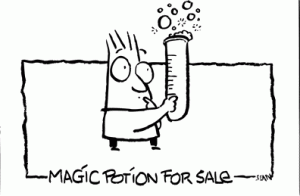Imagine you're a roadroller.
And there's a bit of a bump in the road.
In fact, lots of bumps in the roads.
As you rumble across the bumps, you've got this smug look on your face. Because you're pretty darned sure that the bumps have been smoothened, as you went over them.
Now if you're a car…
Ouch!
You're going to go bumpity-bump, each and every time you hit those bumps, it's ouch, ouch, ouch and ouch!
Kinda like making a sales presentation, or writing copy. You are moving smoothly,and then you've got to make a pitch.
Oooh, bumpity bump!
Jumping from from education to a sales pitch is a big jolt. How do you minimise the jolt?
Nobody likes a sales pitch
You know that. I know that. However, we do like to be persuaded. And a full on sales pitch kind of puts up a wall between you and your audience. So the key to the sales pitch isn't the sales pitch itself. It's the series the statements BEFORE you make the pitch, that brings the emotion and logic for the customer to accept the pitch.
In Hollywood, they call it a segue
A segue (pron: seg-way) is something that creates a bridge.
Imagine you're sitting in the cinema. It's a perfectly normal scene. Then the music changes. Suddenly you can hear a ‘thump, thump, thump' heart-like sound. The music has suddenly become rather chilling. And without realising what's happening, your brain has moved onto the next scene, which as you guessed, will be chilling…and um, scary.
The same concept works when you're making a pitch to a live audience. You need to create the segue that leads to your pitch.
Let's look at the construction of a segue
And let's look at it with a real example:
When I'm presenting to the audience, I know that no matter how diligent I've been in teaching them the concepts of the Brain Audit, they're not going to be able to apply what I've just taught them. Why? Because learning isn't instant. Learning is like a language. You've got learn in layers. No matter how brilliant you are as a person, you can't get the depth of the concept in the first pass.
Why isn't learning instant?
Because the layering in your brain has maximum impact only once a pattern is established. So first you learn one word in a language. The brain has to recognise the pattern of that word before it moves on. Once it understands the pattern, then it learns more words. It recognises the pattern and then layers one over the other.
If you've tried to learn a language, you'll know what I mean. First you learn words. Then you learn grammar. Then you string the sentences together. In effect, you're using patterns and layering. And only when this patterning and layering is repeated and has enough associations, is when you're able to implement a concept to good effect.
So for those of you who've read the ‘Brain Audit'…
You've gone through one layer and pattern. You've understood the concept. Then if you've gone over to the ‘Applications of the Brain Audit' (which is next in the Brain Audit Series), you'll feel that the Applications of the Brain Audit seem superior to the Brain Audit. What's effectively happening is that layering and patterns are kicking in.
Logically, the ‘Applications of the Brain Audit' is what you'd find far more use for. Yet, if you skipped the Brain Audit and went straight to the ‘Applications of the Brain Audit', you'd miss out the pattern and layering.
Can you see what I've just done?
I ran you through a segue. I started out with educating you about the segue and then slipped into a sales pitch. And if you've not read either the ”Brain Audit‘, or the ‘Applications of the Brain Audit‘, you'd feel rather curious to at least want to have a look at what I'm talking about.
You didn't even realise I was slipping into a sales pitch. And yet, in the process of educating you about one thing, I used the concept of layering and pattering, to segue you into having a look at what the ‘Brain Audit' and the ‘Applications of the Brain Audit' contains.
Is ‘seguing' a sneaky practice?
I know what you're thinking. Sneaky, sneaky. Yet it's not as sneaky as you think. All of us need a bridge. We hate speed bumps. And most sales pitches are simply speed bumps. They're jolts.
If you go too fast from education to sales, you hit the speed bump at high speed. And you enter ouch land.
The audience enters ouch land too
Reduce the jolts dramatically. Use a segue. You can use a segue in copywriting (as I've done) or while speaking to an audience.
Use segues as your roadrollers. Smoothen the bump! :
:next_step:


Brilliant Sean! Thank you. 🙂 🙂
That segue really was smooth. Nice job.